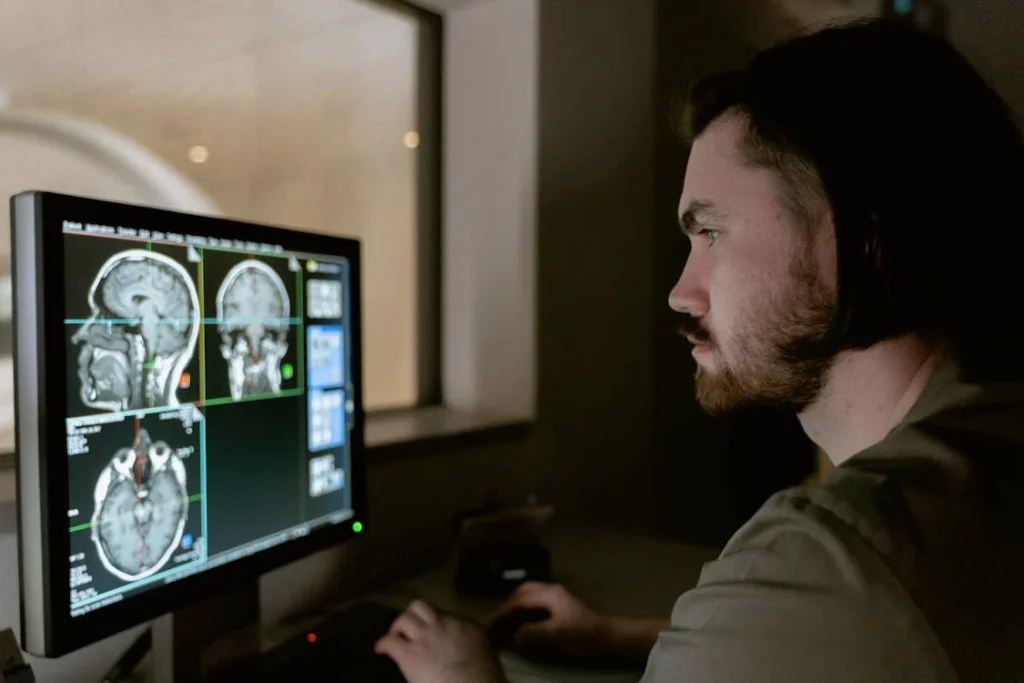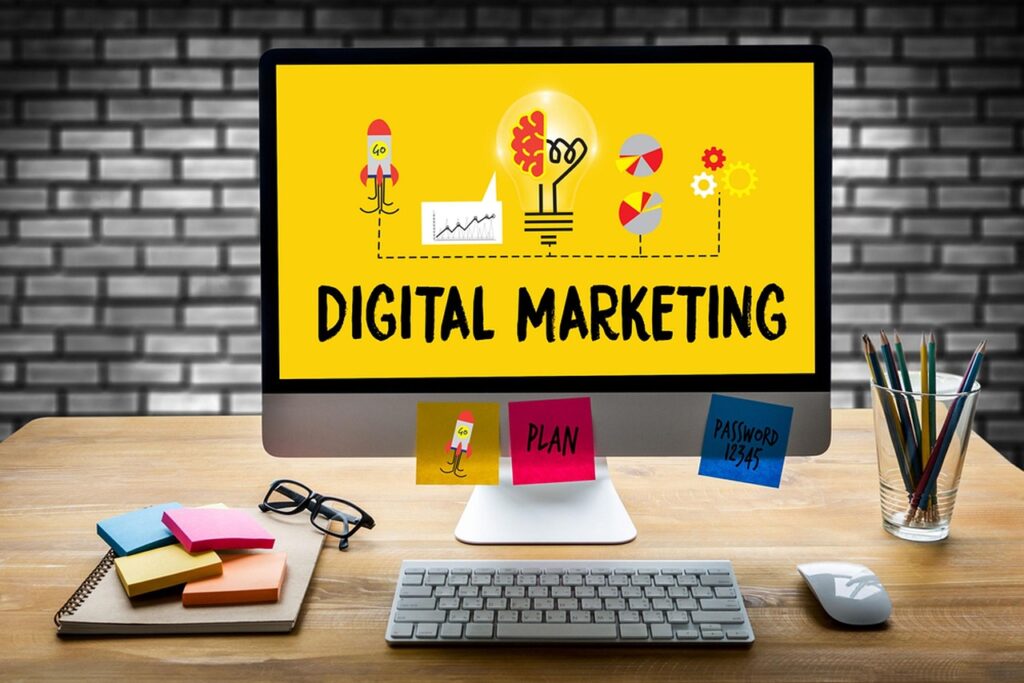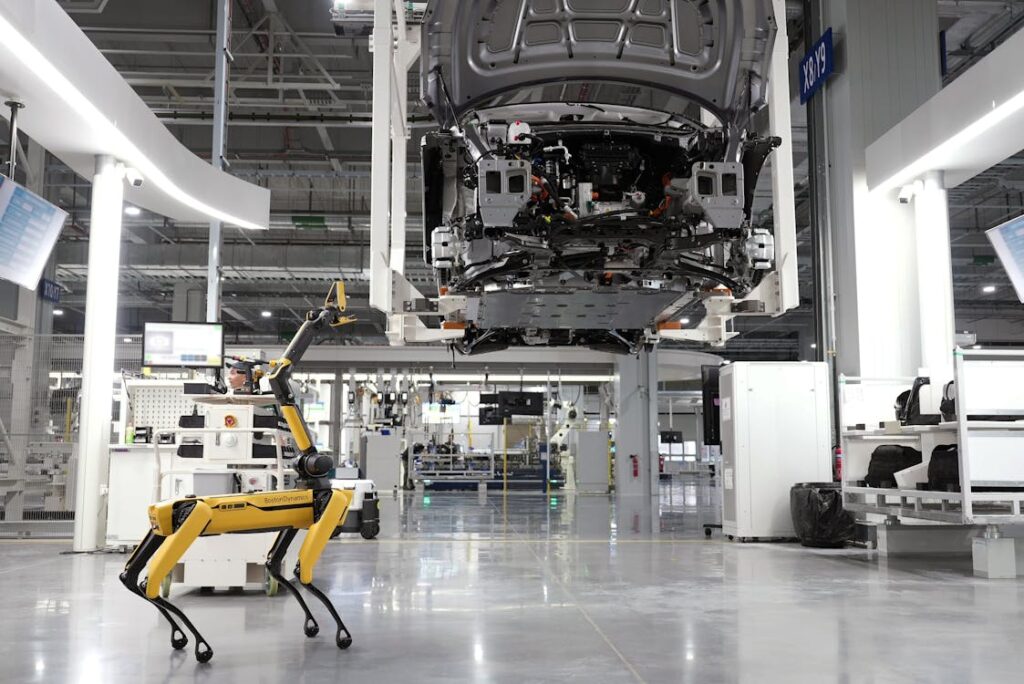
Introduction: The World of Computer Vision Software Development Services
In a world driven by technology, the rapid evolution of artificial intelligence (AI) and machine learning is reshaping how we interact with the world. One of the most fascinating fields that’s contributing to this transformation is computer vision software development services. These services, using AI-powered algorithms and deep learning models, enable machines to interpret and understand visual data from the real world, much like the human eye. This technology is revolutionizing industries across the globe in ways we never imagined. From healthcare to retail, smart cities to manufacturing, and even surveillance systems, computer vision software development services are making their mark in extraordinary and surprising ways.
In this article, we’ll explore 10 surprising ways computer vision software development services are changing the world around us. These changes go beyond the conventional and show how far-reaching and transformative this technology has become.
Revolutionizing Healthcare: How Computer Vision Software Development Services Are Enhancing Diagnostics

In the healthcare industry, time is of the essence, and accuracy is paramount. Computer vision software development services have become a game-changer in the field of diagnostics. By leveraging powerful algorithms, computer vision can process medical imaging data like X-rays, MRIs, and CT scans far more quickly and accurately than human doctors.
This section will delve into the incredible ways computer vision software is being used in the healthcare sector, including:
- Improved diagnostic accuracy through advanced imaging analysis.
- Faster detection of diseases like cancer, heart conditions, and neurological disorders.
- Automation of routine diagnostic tasks, freeing up doctors for more critical tasks.
- AI-powered precision medicine, where computer vision helps create customized treatment plans for patients.
Computer vision is not just about enhancing efficiency in the diagnosis process; it’s about saving lives by detecting critical conditions in their early stages. This section will also cover real-life examples of computer vision software development services already being used in hospitals and clinics.
Redefining Retail Experiences: The Role of Computer Vision Software Development Services in E-Commerce

Retail is no longer just about brick-and-mortar stores. The rise of e-commerce has driven a need for smarter, more personalized shopping experiences. Enter computer vision software development services, which are making waves in this space.
This section will explore how computer vision is changing the face of retail and e-commerce, including:
- Personalized shopping experiences with visual recommendations based on customer preferences and previous purchases.
- Smart product search features that allow users to search using images instead of text, making it easier to find exactly what they’re looking for.
- Virtual try-on technology, where customers can visualize how products like clothing or makeup will look on them without trying them physically.
- Real-time inventory management, using computer vision to track products on shelves and ensure stock levels are optimized.
With computer vision software development services, retailers are not just improving the shopping experience; they are creating an entirely new, frictionless way for consumers to interact with their brands.
Empowering Smart Cities: How Computer Vision Software Development Services Are Shaping Urban Life

As cities grow and populations become more urbanized, managing resources efficiently becomes a monumental task. Computer vision software development services are playing a crucial role in developing smart cities that are not only efficient but also sustainable and safe.
This section will explore how computer vision software is transforming urban life, focusing on:
- Smart traffic management that reduces congestion by analyzing traffic flow and optimizing light patterns in real time.
- Public safety improvements, where computer vision can monitor crowds, detect suspicious activities, and assist in emergency response.
- Waste management systems that use computer vision to optimize trash collection and sorting.
- Environmental monitoring using visual data to track pollution levels and monitor the health of urban ecosystems.
The possibilities for computer vision software development services in shaping future cities are endless, from improving daily commutes to enhancing security, making urban life smarter, safer, and more sustainable.
Transforming Manufacturing: The Impact of Computer Vision Software Development Services on Industrial Automation

The manufacturing sector has long been at the forefront of embracing automation, but now, computer vision software development services are taking this transformation to new heights. The ability of computer vision to inspect products, monitor assembly lines, and detect defects has become a cornerstone of modern industrial operations.
In this section, we’ll look into how computer vision software is impacting manufacturing, with a focus on:
- Automated quality control that uses computer vision to detect defects and anomalies in products with unparalleled precision.
- Predictive maintenance, where computer vision analyzes machine conditions to predict when they need servicing, reducing downtime.
- Robotic automation systems that use computer vision to guide robots in complex tasks like assembly, packaging, and inspection.
- Supply chain optimization, with computer vision providing real-time tracking of products and materials across the entire supply chain.
By incorporating computer vision software development services into manufacturing processes, companies are improving productivity, reducing errors, and ensuring product quality like never before.
Boosting Security Systems: The Growing Role of Computer Vision Software Development Services in Surveillance

As security concerns continue to grow, computer vision software development services are becoming an indispensable tool in surveillance systems. These systems not only monitor physical spaces but can also interpret behaviors, recognize faces, and even detect abnormal activities in real time.
This section will explore how computer vision software is enhancing security, covering:
- Advanced facial recognition technologies that allow for secure access control and identification.
- Behavioral analysis that enables systems to detect unusual activities, like unauthorized access or suspicious behavior, in crowded areas.
- Real-time threat detection that can trigger alerts and allow security teams to respond faster.
- Enhanced surveillance capabilities, with drones and cameras powered by computer vision software to monitor vast areas efficiently.
Whether it’s at airports, public events, or in corporate environments, computer vision software development services are providing the security infrastructure needed to keep people safe and secure.
Conclusion: The Future of Computer Vision Software Development Services
The world is evolving, and computer vision software development services are leading the charge in shaping this change. From healthcare to retail, smart cities to industrial automation, and security to everyday applications, the impact of computer vision is transformative. https://www.leewayhertz.com/computer-vision-development/
As technology continues to advance, we can only imagine what the next frontier will look like. One thing is certain: computer vision software development services will continue to play an essential role in making the world smarter, more efficient, and more connected.
FAQ: Computer Vision Software Development Services

1. What are computer vision software development services?
Computer vision software development services involve the creation and implementation of AI-powered systems that allow computers to interpret and analyze visual data. These services typically include developing algorithms, models, and applications that process images and videos to perform tasks such as object recognition, facial recognition, and image classification.
2. How do computer vision software development services benefit businesses?
Businesses benefit from computer vision software development services by improving efficiency, accuracy, and automation. It enables tasks like quality control, security monitoring, data analysis, and customer personalization to be executed faster and with fewer errors. It also drives innovation by providing businesses with the tools to create smarter products and services.
3. What industries are using computer vision software development services?
Computer vision is widely used across various industries, including healthcare (for diagnostics and medical imaging), retail (for personalized shopping and inventory management), manufacturing (for quality control and automation), smart cities (for traffic management and public safety), and security (for surveillance and threat detection).
4. How does computer vision software improve healthcare diagnostics?
Computer vision software enhances healthcare diagnostics by enabling more accurate and quicker analysis of medical images like X-rays, MRIs, and CT scans. It can detect abnormalities like tumors or fractures that may be missed by the human eye, allowing for earlier and more accurate diagnoses.
5. Can computer vision software help in creating smart cities?
Yes! Computer vision software development services are integral in the development of smart cities. These services help with traffic management, public safety monitoring, waste management, and environmental tracking, contributing to the efficient and sustainable functioning of urban environments.
6. What is the role of computer vision in e-commerce?
In e-commerce, computer vision software enables features like image-based search, virtual product try-ons, personalized recommendations, and inventory management. It helps create a seamless, efficient, and more interactive shopping experience for customers.
7. How does computer vision software enhance security systems?
Computer vision software enhances security systems by enabling features like facial recognition, anomaly detection, and real-time surveillance monitoring. It helps identify potential threats quickly, allowing for faster response times and increased safety in public spaces, buildings, and events.
8. What are the key advantages of using computer vision in manufacturing?
In manufacturing, computer vision software provides automated quality control, real-time tracking, predictive maintenance, and improved production efficiency. By reducing human error and ensuring precise monitoring, it contributes to higher product quality and reduced operational costs.
9. Is computer vision technology affordable for small businesses?
While initially costly, the adoption of computer vision technology has become more accessible with advancements in cloud-based services and AI tools. Small businesses can now implement computer vision solutions without the need for extensive infrastructure, and they can scale these solutions as their needs grow.
10. How can I implement computer vision software in my business?
To implement computer vision software in your business, you should first identify the key tasks or processes that could benefit from automation and visual data analysis. Next, partner with a company that provides computer vision software development services to create a customized solution tailored to your needs. They will help with everything from developing the algorithms to integrating the software into your existing systems.
11. What are some real-world examples of computer vision software in action?
Some examples of real-world applications include:
- Healthcare: AI-driven diagnostic tools analyzing medical imaging for quicker detection of conditions like cancer.
- Retail: Personalized shopping experiences powered by computer vision, where customers are shown tailored recommendations.
- Smart Cities: Traffic flow optimization systems that use computer vision to adjust traffic lights based on real-time conditions.
- Manufacturing: Automated defect detection systems on production lines that ensure high product quality.
12. What is the future of computer vision software development services?
The future of computer vision software development services is incredibly bright. As AI and deep learning technologies continue to evolve, computer vision will become even more powerful and capable of tackling increasingly complex tasks. In the coming years, we can expect advancements in autonomous vehicles, real-time analytics, and improved human-computer interaction, all driven by computer vision.
13. How accurate is computer vision software?
The accuracy of computer vision software depends on the quality of the data, the algorithms used, and the application. With proper training and fine-tuning, computer vision systems can achieve high levels of accuracy, especially in well-defined tasks like facial recognition and defect detection. However, challenges still exist in more complex or dynamic environments.
14. What are the challenges in developing computer vision software?
Some of the key challenges in developing computer vision software include:
- Data quality: Poor or unrepresentative data can lead to inaccurate results.
- Environmental variables: Changes in lighting, camera angles, and other conditions can affect performance.
- Real-time processing: Achieving high-speed analysis of video or image data can be computationally expensive.
15. How does computer vision software integrate with other technologies like AI and machine learning?
Computer vision is deeply integrated with AI and machine learning, as these technologies help improve the system’s ability to learn from data and make predictions. Machine learning models train on large datasets to recognize patterns, while computer vision algorithms analyze visual inputs. Together, they enable advanced applications like autonomous vehicles, predictive maintenance, and smart healthcare solutions.
16. Can computer vision software be used for augmented reality (AR)?
Yes! Computer vision software is essential in creating AR experiences. By processing real-time video feed and recognizing objects or environments, computer vision enables virtual elements to be overlaid onto the real world in a seamless way. This technology powers AR applications in industries such as gaming, retail, healthcare, and education.
17. How do I ensure the privacy and security of data when using computer vision software?
Privacy and security are important considerations when using computer vision, especially in sensitive areas like healthcare and surveillance. To ensure the security of data, businesses should implement strong encryption protocols, anonymize data when possible, and comply with privacy regulations like GDPR. It’s also crucial to partner with reputable developers who adhere to industry security standards.
18. Can computer vision software be used for environmental monitoring?
Yes! Computer vision is increasingly being used for environmental monitoring, including tracking pollution levels, deforestation, and wildlife conservation. By analyzing satellite imagery and real-time video data, computer vision can detect environmental changes and help organizations take proactive measures to protect ecosystems.
19. How long does it take to develop computer vision software?
The timeline for developing computer vision software depends on the complexity of the project, the amount of data involved, and the specific features required. Simple solutions might take a few weeks to a few months, while more complex systems, such as real-time facial recognition or autonomous driving, could take longer.
20. Where can I find experts in computer vision software development services?
You can find experts in computer vision software development services by reaching out to specialized software development companies, technology consulting firms, or even AI-focused startups. Online platforms, such as LinkedIn, and directories like Clutch or GoodFirms, can help connect you with professionals in the field. https://makemoney.apid.shop/top-pilot-software-apps/










